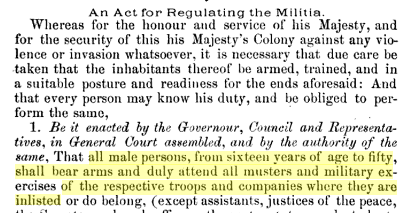Corpora and the Second Amendment: “keep and bear arms” (Part 2)
An introduction and guide to my series of posts “Corpora and the Second Amendment” is available here. The corpus data that is discussed can be downloaded here. That link will take you to a shared folder in Dropbox. Important: Use the "Download" button at the top right of the screen.
COFEA and COEME: lawcorpus.byu.edu.
This post will complete my analysis of the Second Amendment—for now. So far, I’ve focused almost entirely on the Second Amendment’s specification of the right that it protected—the right of the people, to keep and bear Arms—and have said little or nothing about well regulated or militia. That doesn’t mean I have nothing to say about those expressions, it just means that I’ll defer that discussion until sometime in the future.
Meanwhile, here in the present, this post will try to answer the question that I raised in the last post: whether the Supreme Court was right in saying that the fact that bear arms appears in the phrase keep and bear arms means that bear arms couldn’t have been used in its idiomatic military sense:
[If bear arms were given its idiomatic meaning,] the phrase “keep and bear arms” would be incoherent. The word “Arms” would have two different meanings at once: “weapons” (as the object of “keep”) and (as the object of “bear”) one-half of an idiom. It would be rather like saying “He filled and kicked the bucket” to mean “He filled the bucket and died.” Grotesque.
It’s true that interpreting bear arms as having been used idiomatically would mean that arms conveys two different meanings (a phenomenon known as copredication). But as explained in my last post, that doesn’t rule out such an interpretation. Now, in this post, I’ll argue that interpreting bear arms in that way is more than just a theoretical possibility. I’ll discuss evidence that makes it reasonable to think keep and bear arms was intended to convey such a meaning, and that such an interpretation would have been more likely than the alternative.
Read the rest of this entry »
